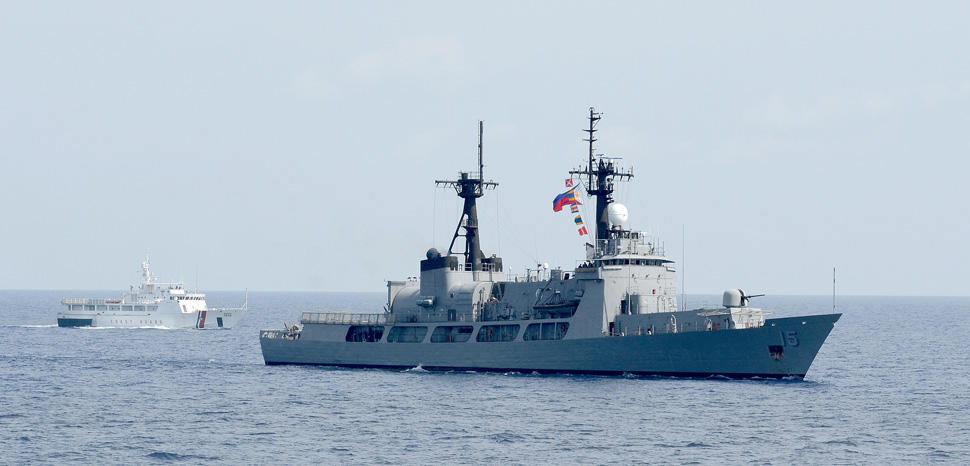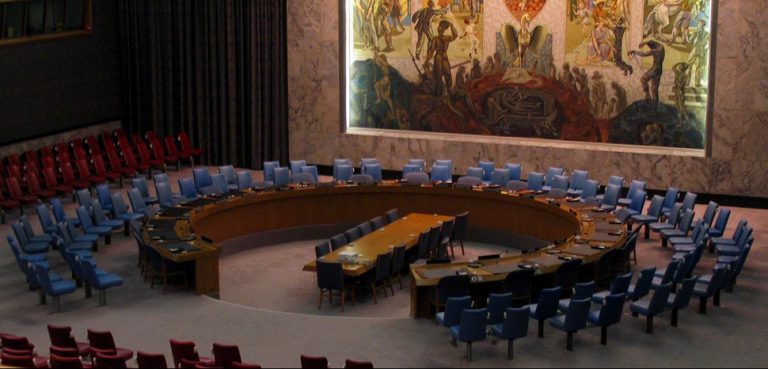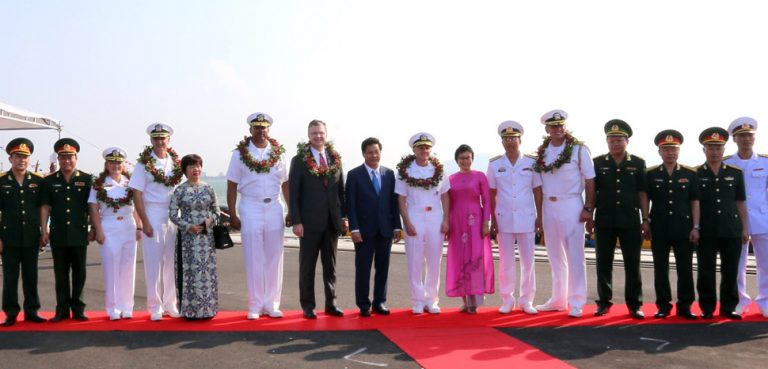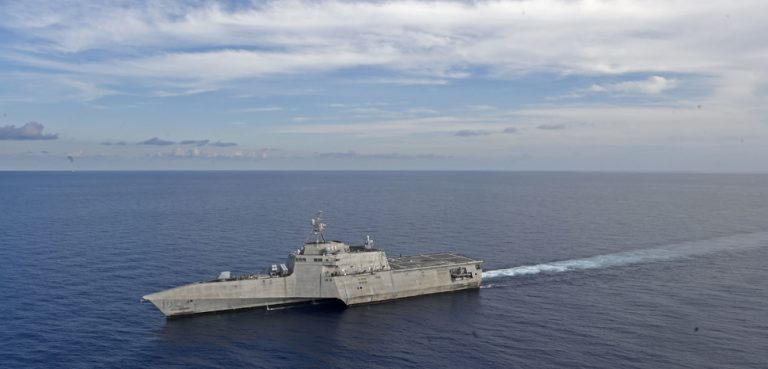Geopolitical risk is evident nowadays in the various tense exchanges which have become sources of gain or pain among states. We have the recent tirade from the United States over Iran-backed Yemeni Houthis and their purported involvement in sabotaging oil tankers, and the massive protests of Hong Kongers over the Extradition Bill. Not to mention the ongoing ramifications of the US-China Trade War. And now we have the West Philippine Sea (South China Sea) flashpoint, where a Chinese vessel rammed Filipino vessels in the Philippine exclusive economic zone (EEZ). And it was on the Philippines’ 121st Independence Day, June 12, when this latest incident became the talk of the town.
It didn’t take long for Filipinos to vent their outrage on social media after these events were reported in the news. The Business Insider reported: “the Philippines has accused China of ramming a Philippine fishing vessel, sinking it, and then abandoning the crew to drown in open waters.” Meanwhile, the New York Times noted that the 22 Filipino fishermen were at sea before being rescued by a Vietnamese boat, later receiving assistance from the Philippine Navy patrol ship BRP Ramon Alcaraz, which was dispatched to the area.
It was midnight of June 9 when the incident happened in Recto Bank (also known as Reed Bank), 500 km away from Philippine shore. Recto Bank is considered a traditional fishing ground, and it is also frequented by fishermen from other countries like Vietnam, China, and Taiwan.
A few hours after the incident went viral, the Department of National Defense released an official statement: “A collision between a Chinese and Filipino vessel was reported by Filipino fishermen near the Recto Bank in the West Philippine Sea on the evening of June 9, 2019. The collision sank the Filipino vessel. This is not the expected action of a responsible and friendly people.”
Foreign Affairs Secretary Teodoro “Teddy” Locsin said on June 13 that the Philippines has fired up a diplomatic protest over the ship-ramming incident in the West Philippine Sea. The top diplomat also described it on social media as “contemptible and condemnable.” The sentiment was echoed in an assessment from former chief of the Philippine Navy, Alexander Pama, who said there was no doubt that the Chinese vessel had intentionally hit the Philippine boat. Subsequently, the local chief executive (Mayor Romulo Festin) of San Jose town in Occidental Mindoro expressed a belief that the incident involving a Chinese vessel colliding with a Philippine ship was intentional.
On the other hand, China released its own press release wherein it admitted that it was a Chinese vessel (from Guangdong Province) that hit a Philippine boat in the Recto Bank on June 9 (Sunday). Interestingly, the release claimed that the Chinese fishing boat Yuemaobinyu 42212 was “berthed” in the area when seven or eight Filipino fishing boats “besieged” it. The release continued by saying that China attaches great importance to China-Philippines friendship and safety of life at sea, and will continue to properly handle this issue with the Philippines in a serious and responsible manner. It further maintained that there is no such thing as ‘hit-and-run.’ Moreover, on June 13, Chinese Foreign Ministry spokesman Geng Shuang called the incident “an ordinary maritime traffic accident” and said China was still investigating. “If the relevant reports are true, regardless of the country from which the perpetrator came from, their behavior should be condemned,” the Chinese official said. Strangely, this last statement was removed from the Chinese Embassy’s social media pages on Friday, only to be reposted on its official Twitter page on Saturday.
Philippine Navy Chief Vice Admiral Robert Empedrad confirmed that a Chinese vessel came into contact with a Filipino fishing boat and caused it to sink at midnight on Sunday in Recto Bank, and that this was no accident but rather the result of a deliberate maneuver to ram the smaller craft. Also, Gemvir 1 crewmembers made it clear that it was a Chinese vessel that rammed their boat and not a Vietnamese vessel as some officials had insinuated.
According to Junel Insigne (captain of the Filipino vessel): “They circled us, went back, and switched on their lights. When they saw we were sinking, they switched off their lights and hurriedly left.” He said he knew they were Chinese because of the type of ship lights. Finally, he added: “If the Vietnamese weren’t there, we would have died” (statements translated from Tagalog by the authors).
Moreover, the Navy Chief said at a maritime symposium held at The Manila Hotel last June 14: “The Filipino vessel was anchored. So when based on the international rules of the road, it had the privilege because it could not evade… The ship was rammed. This is not a normal incident. The boat was anchored.” In such an instance, the Armed Forces of the Philippines may assist the relevant government agency to conduct a formal inquiry into the incident.
Analysis
The 1951 San Francisco Treaty failed to stipulate possession of the contested islands when Japan lost its title to them upon defeat in the Second World War. Regarding Article 2 (f): “Japan renounces all right, title and claim to the Spratly Islands and to the Paracel Islands.” The Spratly Islands constitute a chain of 200 islets, coral reefs, and sea mounts, and its northern extension, the Paracel islands, spread across 250,000 square kilometers of the South China Sea, a vast continental shelf that constitutes a potentially rich source of oil and natural gas. The region descended further into an international conflict when a number of claimants began extracting resources from the seabed contiguous to their Exclusive Economic Zones (EEZ) in the mid-70s. China, Taiwan, and four ASEAN states Brunei, Malaysia, the Philippines and Vietnam all laid claim and/or occupied part of the islands in the South China Sea. And the Spratly’s contested ownership has intensified and lingers to this day.
Meanwhile, a significant aspect of the territorial dispute in the South China Sea concerns China’s construction in the area. China has engaged in large-scale land reclamation activities on seven reefs (Fiery Cross Reef, Johnson South Reef, Cuarteron Reef, Gaven Reef, Hughes Reef, Mischief Reef and Subi Reef) in the disputed areas of the South China Sea.
The recent incident shows very clearly the strategy of China’s psychological operations (PSY-OPS). The Department of Defense for the first time dragged this paramilitary force (People’s Armed Forces Maritime Militia under Paramilitary Forces) out of the shadows in 2017 in its annual report on Chinese military power. The Pentagon said the maritime militia is used to “enforce maritime claims and advance China’s interests in ways that are calculated to fall below the threshold of provoking conflict.” In the 2018 report, the department said that the maritime militia (‘Yuen Tai Yu’ in Chinese) plays a major role in coercive activities to achieve China’s political goals without fighting.
Recently, Supreme Court Senior Associate Justice Antonio Carpio said that it’s highly likely that a Chinese maritime militia vessel rammed the Filipino fishing vessel F/B Gimber 1 in the West Philippine Sea on June 9. Accordingly, this could signal the start of a new “gray zone” offensive by China to drive away Filipino fishing vessels in the West Philippine Sea, “in the same way that China is driving away Vietnamese fishing vessels in the Paracels [the northern chain claimed by Vietnam].
Meanwhile, it would be much easier to probe the incident in the said area of operation if there was the presence of a vessel monitoring system, just like the lighthouses located in the nearby Benham Rise. In fact, the Illegal, Unreported, And Unregulated Fishing Enforcement (IUUF) Act of 2015 requires countries to closely monitor foreign vessels through inspections and enforcement. This could be accomplished by a Vessel Monitoring Measure (satellite or non-satellite-based mechanism) with installed transponders in every fishing boat. If such a device were enabled, it would transmit speed, location, proximity, and a faster tracking measure among vessels in real time.
Accordingly, the National Oceanic and Atmospheric Administration (NOAA) would have the authority to make more vessel inspections, deny port entry to vessels that illegally fish, and share the results of inspections with other countries. We hope that this is will send a good strategic communication to the rest of the world that the Philippines is serious about cracking down on IUU fishing too where maritime crimes are also being committed by poachers and intruders. To avoid such confrontation in the maritime domain, as international rules maintain, stationary vessels should absolutely be avoided. Thus, the crewmembers of oceangoing vessels as well as commanding officers of warships should be knowledgeable of the International Rules of the (maritime) Road. And lastly, the Philippine Coast Guard’s Maritime Safety Services Command should exhaustively investigate the case. And in time, prosecution must be sought for the actual perpetrators/culprits who not only violated the rule of law but also inflicted economic sabotage on Filipino fishermen who are just pursuing their livelihood. According to Ian Storey, a senior fellow at the ISEAS-Yusof Ishak Institute in Singapore and an expert on the geopolitics of the South China Sea, “if the Chinese vessel had deliberately rammed a stationary Filipino boat, it would be a clear breach of international norms.” Gregory Poling, Director of the Asia Maritime Transparency Initiative, maintains that a large number of Chinese fishing vessels have been discovered on Subi and Mischief Reef in the Spratly Islands in 2018. He also noted at one point that all claimants must “find the path forward to manage these disputes before something breaks.”
The Way Ahead
While this incident may put strains on the diplomatic relation of two states, we need to maintain open lines of communication given the robust economic tie-ins and high-density investment that both states have engaged in since 2016. Meanwhile, the Philippines has to be more cautious with its actions since any miscalculation may result in more coercive tactics by China in the South China Sea. Though others view the diplomatic protest of the Department of Foreign Affairs as hypocritical, even if China ignores the protests, as it often does, Philippines still stands to benefit. We do not want to repeat the 2012 Scarborough Shoal Stand-off and the 2015 encounter of Filipino fishermen in the same area. During that time, the Philippines also lodged diplomatic protests with China over two alleged fishing-related incidents at Scarborough Shoal in the South China Sea.
The Philippines shall not tolerate such lies (reversing the issue against Filipino fishermen) like those pushed by China in the 2013 arbitration case, where the tribunal (Permanent Court of Arbitration) debunked China’s claim of ownership to over 85.7% of enclosed water under the nine-dash line. In the long run, we have to push for the Code of Conduct that was long overdue since 2017 when it was first discussed at the ASEAN Summit in the Philippines along with other member states. This is vital for the security of the commercial fishing industry, the environment, and most especially our human capita (our fellow and beloved Filipino fishermen).
Indeed, the Philippines has consistently aired the issues through multilateral means while China prefers bilateral negotiation. In other words, China has always opted for one-on-one talks to manage tensions without external forces to meddle in-between. For us, China’s international security activism coupled with maritime gray zone operations will continue to be provide a challenge in the multipolar global order.
The views expressed in this article are those of the author alone and do not necessarily reflect Geopoliticalmonitor.com or any institutions with which the author is associated.




